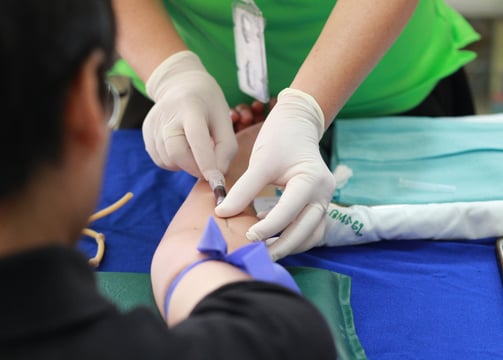Research Scope
Clinical practice


Current Research
In the laboratory, Dr. Putterman’s team investigates the complex mechanisms underlying autoimmunity, with a specific focus on the pathogenesis of kidney and neuropsychiatric manifestations associated with systemic lupus erythematosus (SLE). Our research examines critical components such as anti-DNA antibodies, macrophages, and cytokines, with the goal of developing novel and effective therapeutic approaches for lupus.
We are actively seeking new treatment agents and strategies that can effectively improve the condition of SLE patients and extend their lifespan. Regarding neuropsychiatric symptoms related to SLE, we are exploring innovative drug delivery methods to bypass the blood-brain barrier. Additionally, we are committed to identifying informative biomarkers that could enhance the diagnosis and monitoring of SLE, paving the way for future advancements in patient care.






Collaborative Efforts:
Our laboratory is actively engaged in efficient collaboration with a diverse array of international scientific centers, including renowned institutions in Europe, North America, and Asia. These partnerships facilitate the exchange of cutting-edge research and innovative methodologies, allowing our team to tackle complex global challenges in fields such as biotechnology, environmental science, and material engineering. By leveraging the expertise and resources of these esteemed institutions, we aim to accelerate the pace of scientific discovery and contribute significantly to advancements that benefit humanity as a whole.
Empirical research
Academic Excellence
Dr. Chaim Putterman has extensive experience in medicine and immunology, contributing significantly to research and education in these fields at prestigious institutions in Israel and the United States.
Experience
Research and Teaching
Professor Putterman leads innovative research initiatives and mentors future medical professionals.


About Dr. Chaim Putterman
Leading immunology research at Bar-Ilan University and Galilee Medical Center, Dr. Putterman brings two decades of experience from prestigious institutions to advance medicine and microbiology.


250+
20+
Graduate students mentored
Publications
Dr. Putterman serves as a full Professor at the Azrieli Faculty of Medicine of Bar-Ilan University in Zefat, Israel, where he is also the Director of the Research Institute at Galilee Medical Center in Nahariya. In addition to his roles in Israel, he holds the position of Professor Emeritus of Medicine and Microbiology & Immunology at the prestigious Albert Einstein College of Medicine and Montefiore Medical Center in Bronx, New York, where he worked for two decades.
Dr. Putterman’s exemplary work has garnered substantial research funding from esteemed organizations, including the National Institutes of Health, Alliance for Lupus Research, Lupus Research Institute, Arthritis Foundation, Boehringer Ingelheim, and Biogen Idec. His prolific contributions to medical and scientific literature include over 200 articles and book chapters, demonstrating his deep expertise and commitment to the field. He is recognized as a member of the prestigious American Society of Clinical Investigation and is actively involved with the American College of Rheumatology and the American Association of Immunologists. His scientific influence extends to his work on various NIH and international study sections and his active participation on several editorial boards.
With a profound commitment to advancing the understanding of immunology and autoimmune diseases, Dr. Putterman focuses his research on unraveling the complexities of immune-mediated nephritis, neuropsychiatric lupus, and systemic lupus erythematosus (SLE). His laboratory endeavors aim not only to identify novel mechanisms and biomarkers associated with these conditions but also to develop innovative treatment strategies that could significantly improve patient outcomes.


Gallery










Explore groundbreaking studies in medicine and immunology.
Contacts:
04-9107528
© 2025. Designed & Created by Dr. Baruh Polis ©










